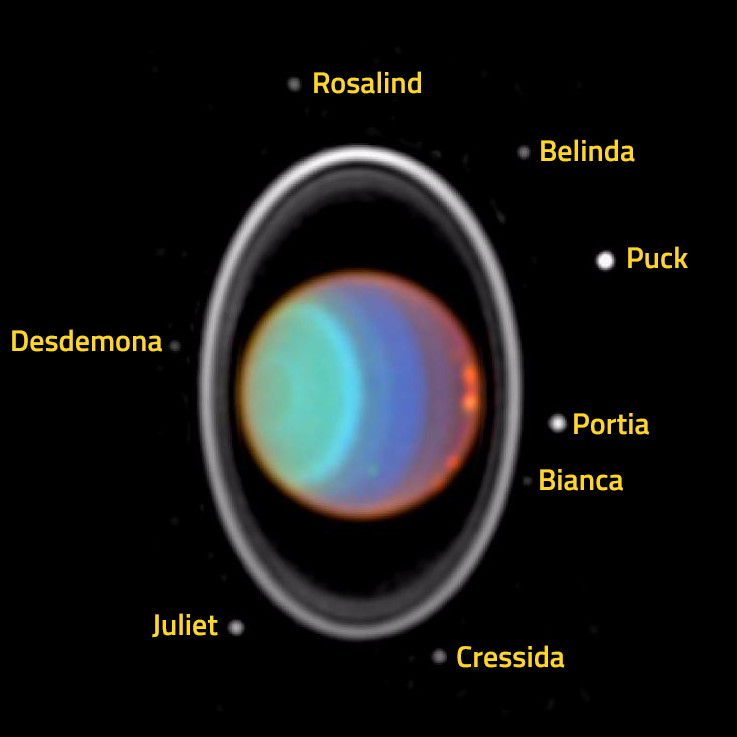Cressida, a moon of Uranus

Image of Uranus in infrared from Hubble Space Telescope. Image was taken on 28th July 1997, capturing clouds in the atmosphere of Uranus, its rings and 8 of its moons, including Cressida. Image credit: NASA/JPL/STScI
38,401 miles
51 miles
Cressida is one of the 27 moons of Uranus. It is the fourth closest moon to orbit the planet, orbiting at an average distance of 61,800 kilometres (38,400 miles). Cressida has a diameter of 82 kilometres (51 miles) and takes only 11 hours to complete an orbit of the planet.
Cressida is classed as an inner regular prograde moon of Uranus. It travels around the planet in the same direction of the planet's rotation and is believed to have formed from materials spinning around the planet.
Cressida is a a member of a group of Uranus' moons called the Portia group. The Portia group contains nine moons (Bianca, Cressida, Desdemona, Juliet, Portia, Rosalind, Cupid, Belinda and Perdita) which have similar appearances and characteristics. These moons may have unstable orbits which leads to the possibility that, at some point in the distant future, they could collide with each other, break up into pieces, form rings or crash into Uranus.
Cressida is a title character in William Shakespeare's play Troilus and Cressida. The play takes place during the events of the Trojan war, a long-running conflict between Trojans and Greeks in ancient times. Troilus, a Trojan prince, and Cressida fall madly in love with each other. However they are separated when Cressida is traded to the Greeks by her father. A Greek warrior named Diomedes aims to win Cressida's affections. Although she initially resists, she eventually falls for him, an event witnessed by Troilus who is sickened and angered by her betrayal. How things actually end up for them is never really wrapped up. Troilus appears to give up on the idea of love, while it's anybody's guess what happens to Cressida. Maybe she ends up with Diomedes, maybe she doesn't!
All moons of Uranus are named after characters in plays by William Shakepeare or a poem by Alexander Pope. Cressida is the only moon of Uranus to be named after a character in Troilus and Cressida.





